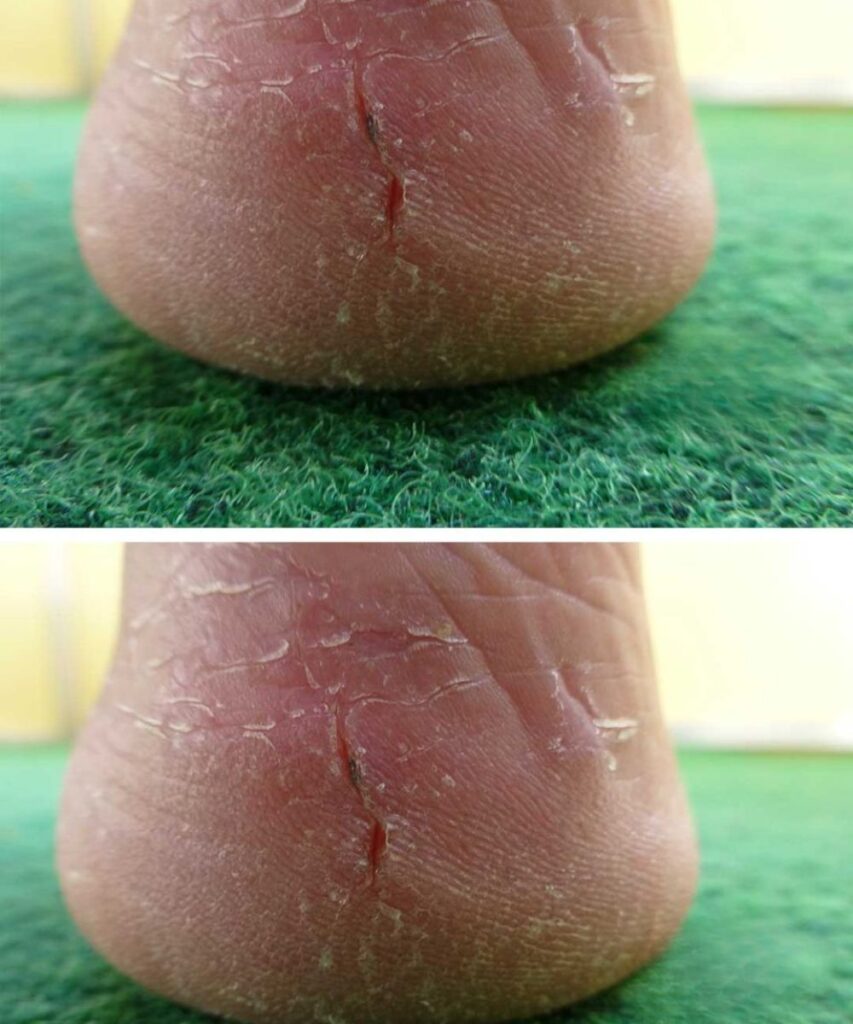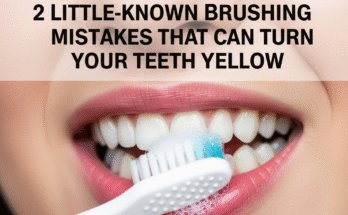
Cracked heels—also known as heel fissures—are a common foot issue that can be both painful and embarrassing. While many people experience dry skin on their feet, extreme dryness can cause the skin on the heels to split open, forming deep fissures. If left untreated, these cracks can lead to infections and complications, in addition to being a cosmetic concern.
Although many people turn to lotions and creams as the first line of defense, these topical treatments may not always provide adequate relief. If you’ve tried various moisturizers without success, it may be time to explore deeper solutions—and consult a healthcare professional if necessary.
1. Understanding Heel Fissures
Heel fissures occur when the skin on your heels becomes excessively dry and thick, losing its flexibility. As you walk or stand, pressure causes the skin to split, leading to painful cracks. The skin on the heel is naturally thicker, which makes it more prone to this type of damage when moisture levels drop.
In more serious cases, fissures can become deep enough to bleed or develop infections. Identifying and addressing the root causes early on is essential for both relief and long-term healing.
2. Common Causes of Cracked Heels
Several everyday factors can contribute to cracked heels, including:
- Prolonged standing, especially on hard surfaces, increases pressure on the feet.
- Wearing open-backed shoes or sandals, which allow the heel’s fat pad to expand sideways, encouraging cracks.
- Obesity, which places more stress on the heel’s structure.
- Medical conditions like diabetes, hypothyroidism, and eczema, which can compromise skin health.
- Cold weather and dry environments, which dehydrate the skin and lead to flakiness.
Understanding what triggers your heel fissures can help you take more effective preventative steps.
3. Why Moisturizers May Not Be Enough
While moisturizing is important, it’s often not sufficient on its own. Most lotions only hydrate the outer layer of skin, but they don’t penetrate deeply enough to treat thickened or callused areas. If the skin is too dry or cracked, a barrier may form that prevents moisture from being absorbed where it’s most needed.
4. Hydration’s Role in Skin Health
Hydration is critical for maintaining supple, resilient skin. Dehydration can cause the skin to become dry, tight, and more likely to crack. Drinking plenty of water daily helps keep your skin hydrated from the inside out.
In addition to proper hydration, using a humidifier in dry indoor spaces—especially during winter—can support your skin’s natural moisture barrier.
5. Don’t Skip Exfoliation
Exfoliating the feet helps remove dead skin cells and reduces skin thickness, allowing moisturizers to be more effective. After soaking your feet to soften the skin, use a pumice stone or foot file to gently exfoliate problem areas.
Consistent exfoliation, when done correctly, can prevent build-up and keep your heels smooth and more resistant to cracking.
6. The Benefits of Foot Soaks
Foot soaks are not just relaxing—they’re also an effective treatment for cracked heels. Soaking your feet in warm water for 10–15 minutes softens the skin and prepares it for exfoliation and moisturizing.
Additions like Epsom salt can reduce inflammation, while apple cider vinegar offers gentle exfoliating and antibacterial properties. After soaking, always pat your feet dry and apply a thick, nourishing moisturizer to seal in hydration.
7. Choose Footwear Wisely
The shoes you wear have a direct impact on your heel health. Shoes that offer proper arch support and cushioning help distribute weight evenly and reduce pressure on the heels. Avoid open-back footwear, as they allow the heel pad to expand and increase the risk of cracking.
For those who are on their feet for long periods, supportive and shock-absorbing footwear is a worthwhile investment. Wearing breathable socks can also help by keeping your feet dry and reducing irritation.
8. Diet’s Role in Skin Health
What you eat influences your skin’s ability to heal and renew itself. A diet rich in vitamin E, vitamin C, zinc, and omega-3 fatty acids supports skin repair and elasticity.
Incorporate foods like leafy greens, nuts, seeds, avocados, and fatty fish to nourish your skin from within. Maintaining a healthy weight also reduces excess pressure on your heels, helping to prevent cracks from forming.
9. Viral Home Remedies Worth Trying
Several popular home remedies have gained traction online for treating cracked heels. While results can vary, some of these natural approaches are worth considering:
- Honey and coconut oil: Both ingredients offer deep moisturization and antibacterial benefits.
- Banana masks: Mashed bananas are rich in vitamins that may help soften rough skin and promote healing.
- Petroleum jelly and socks overnight: A classic and effective method to lock in moisture.
These remedies may offer relief when used consistently and in combination with other care steps.
10. When to Seek Medical Advice
If your heels are severely cracked, bleeding, or showing signs of infection (such as redness, swelling, or pus), it’s important to seek professional help. A podiatrist or dermatologist can evaluate the condition and suggest appropriate treatments. These may include:
- Prescription-strength creams
- Antibiotics for infection
- Debridement (removal of thick skin)
- Padding or orthotics to relieve pressure
Prompt treatment can prevent complications and get you back on your feet—comfortably.
Final Thoughts
Cracked heels may seem like a minor annoyance, but they can quickly escalate into painful and problematic conditions. By taking proactive steps—such as moisturizing, exfoliating, choosing proper footwear, and improving hydration and diet—you can significantly improve the condition of your feet.
And when in doubt, don’t hesitate to consult a healthcare provider to ensure you’re getting the right treatment.


